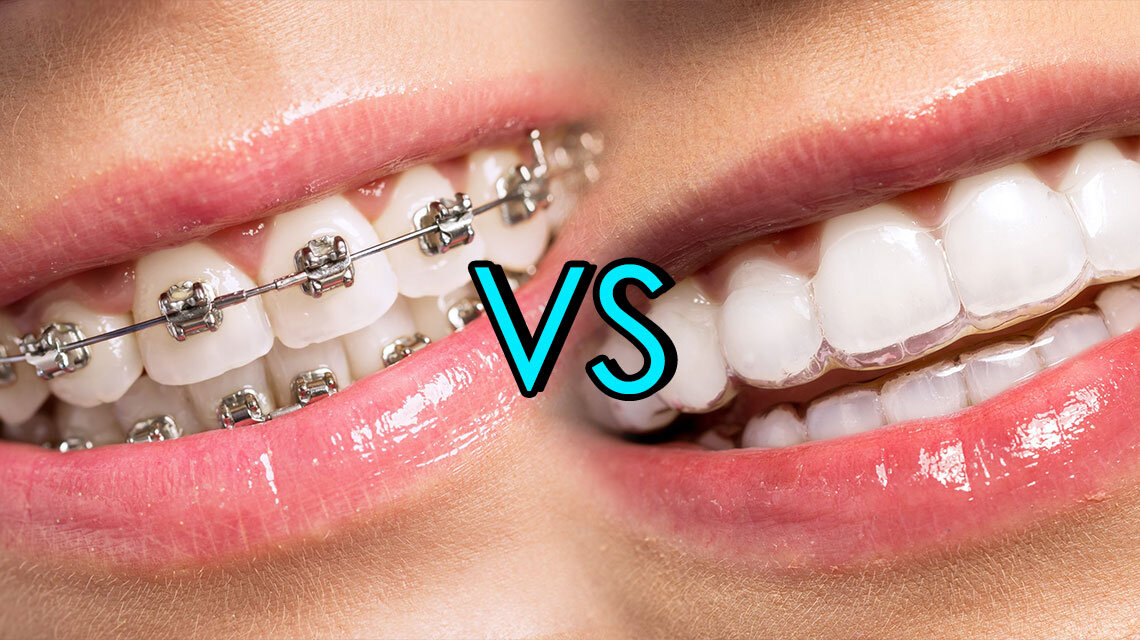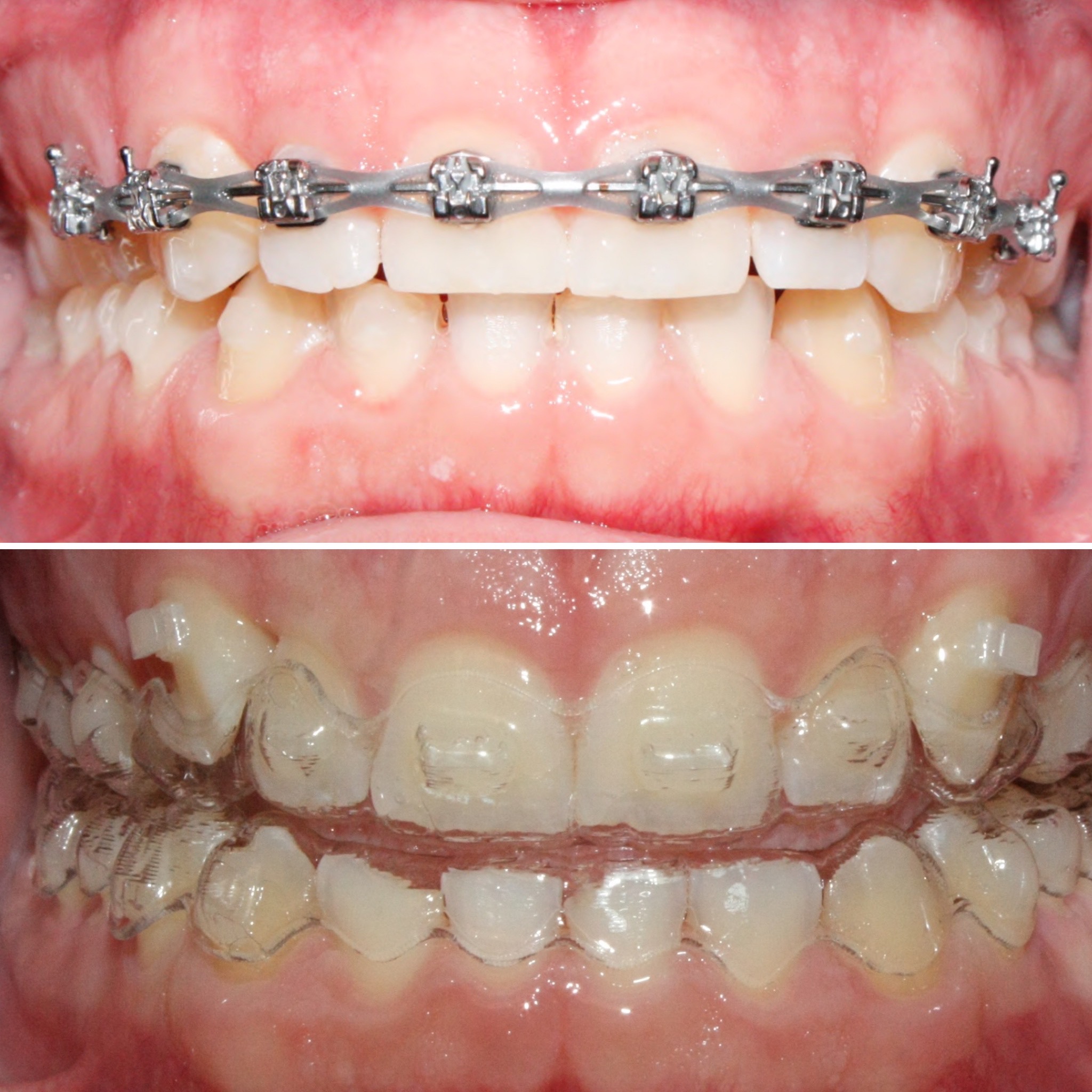Keeping Oral Health While Utilizing Invisalign: Tips for a Smooth Experience
Keeping Oral Health While Utilizing Invisalign: Tips for a Smooth Experience
Blog Article
Invisalign vs. Traditional Braces: Which Choice Is Right for You?
When taking into consideration orthodontic treatment, the option between Invisalign and standard dental braces offers numerous crucial elements that merit mindful analysis. Invisalign supplies a very discreet choice with removable aligners, while traditional dental braces provide an extra noticeable yet effective solution for serious misalignment.
Introduction of Therapy Choices

On the other hand, conventional dental braces include steel brackets and cords that are bonded to the teeth. This method applies continual pressure gradually to accomplish alignment. While efficient for complicated orthodontic issues, conventional braces need routine visits for adjustments and can pose obstacles in preserving oral health due to the trouble of cleansing around cables and brackets.
Both options have their qualities, and the selection frequently rests on details oral problems, lifestyle choices, and individual compliance. Inevitably, speaking with an orthodontic specialist is crucial for figuring out one of the most ideal treatment plan customized to individual demands. Comprehending the subtleties of each alternative can substantially affect the overall success of orthodontic therapy.
Visual Considerations
A considerable variable influencing the choice between Invisalign and conventional dental braces is the visual charm each treatment supplies. Invisalign aligners are crafted from clear plastic, making them virtually unnoticeable when put on.
On the other hand, typical dental braces contain metal braces and wires, which can be much more visible. While advancements in orthodontic innovation have actually caused the advancement of smaller braces and colored elastics, standard braces still keep a more obvious account. For some people, the visibility of dental braces may discourage them from seeking required treatment.
Inevitably, the option between Invisalign and traditional dental braces may rest on individual preferences relating to visual appeals. Individuals that prioritize discretion usually favor Invisalign, while those that are much less worried about exposure might choose typical braces. Recognizing the visual implications of each alternative is vital for making a notified decision that aligns with one's way of living and choices.
Comfort and Convenience

In terms of benefit, Invisalign aligners are removable, allowing patients to enjoy their favorite foods without restriction and maintain ideal dental hygiene. Brushing and flossing are simplified, as the aligners can be taken out throughout these routines, whereas traditional dental braces require careful steering around brackets and cables.
In addition, Invisalign's dynamic system enables fewer orthodontic brows through. Individuals generally obtain several collections of aligners at as soon as, which can simplify the treatment process and decrease time invested in the orthodontist's chair. On the other hand, typical braces necessitate routine changes, making them less practical for those with active schedules. Invisalign. In general, the comfort and benefit of Invisalign make it an appealing selection for numerous individuals looking for orthodontic treatment.
Therapy Period and Performance
While both Invisalign and typical dental braces are reliable in dealing with oral imbalances, the duration of treatment can vary dramatically in between the 2 alternatives. Commonly, Invisalign treatment can take anywhere from 12 to 18 months, depending upon the complexity of the instance. The clear aligners work by gradually moving teeth right into their wanted positions, and routine follow-ups with an orthodontist help ensure progress stays on course.
On the other hand, typical braces usually call for a longer dedication, usually varying from 18 months to three years. This results from their fixed nature and using cables and brackets, which can be much more reliable for extreme misalignments and complex cases (Invisalign). The treatment effectiveness of traditional dental braces is well-documented, as they enable accurate changes and higher control over tooth activity
Ultimately, the choice in between Invisalign and traditional braces may rest on both the anticipated treatment duration and the details dental problems available. Consulting web with an orthodontist is crucial, as they can provide customized recommendations based upon private needs, guaranteeing the chosen method lines up with preferred end results and durations.
Cost Contrast and Insurance Coverage Choices
Cost plays a considerable role in the decision-making procedure for people thinking about orthodontic therapy, whether selecting Invisalign or conventional dental braces. Generally, the expense of Invisalign varieties from $3,000 to $8,000, while conventional braces normally set you back in between $2,000 and $6,000. Elements influencing these expenses consist of the complexity of the instance, the period of therapy, and geographical area.
Insurance coverage can dramatically impact out-of-pocket expenditures. Several oral insurance coverage strategies provide partial protection for orthodontic therapies, but the specifics can vary extensively. It is critical for people to assess their insurance coverage to identify the level of insurance coverage for either option. Generally, Discover More typical dental braces might be extra frequently covered by insurance policy strategies compared to Invisalign, which some insurance firms classify as a cosmetic treatment.
Furthermore, numerous orthodontic techniques supply adaptable layaway plan, making both therapy choices much more available. Individuals need to ask about potential financing alternatives and discount rates for in advance payments. Examining the complete expense, consisting of insurance coverage benefits and layaway plan, is vital for making a notified decision that aligns with both visual choices and spending plan factors to consider.

Conclusion
In summary, the choice between Invisalign and traditional braces rests on multiple elements, including visual preferences, comfort, therapy period, and cost. Invisalign provides a very discreet, removable option that facilitates oral hygiene and nutritional versatility, while standard dental braces might be preferable for complex oral concerns and commonly come at a lower cost point. Eventually, examination with an orthodontist is vital to examine private circumstances and determine the most proper therapy option for achieving optimum dental positioning.
When thinking about orthodontic treatment, the selection between Invisalign and conventional dental braces presents several important aspects that warrant mindful assessment.Comparing Invisalign and typical braces discloses unique that site therapy options for orthodontic modification.While both Invisalign and typical dental braces are reliable in dealing with dental misalignments, the duration of treatment can vary significantly in between the 2 alternatives.Cost plays a significant role in the decision-making process for people taking into consideration orthodontic treatment, whether opting for Invisalign or typical braces.In recap, the option in between Invisalign and typical braces hinges on numerous variables, consisting of aesthetic choices, convenience, treatment period, and price.
Report this page